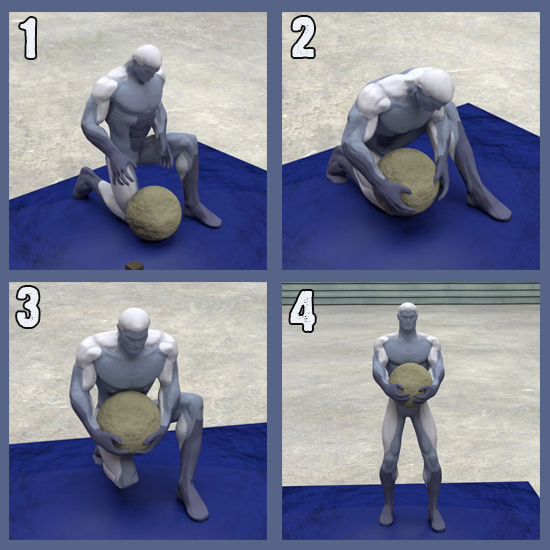Video
The Obstacle
Atlas stones are certainly not a new thing. They've been a staple and key event of strong man competitions for many years, as well as becoming fairly popular in the CrossFit and functional fitness scene.
In strong man competitions you'll see ridiculously heavy stones being lifted, where solid technique is absolutely required. Whereas when it comes to obstacle course racing, typically the atlas stone is far lighter, and must be lifted and carried a short distance.
For some reason, atlas stone technique for OCR isn't commonly talked about, and the majority of competitors you see just brute force it, with little regard to form. Yes, in an obstacle race (for example Spartan Race), the atlas stone will be far lighter than what you will see in a strongman competition. However, this isn't justification to ignore technique.
As with all obstacles, you can make things a lot easier for yourself (and conserve vital energy) with some simple tips.
Key Skills
Tips & Techniques
For the initial setup and lift, we're going to be borrowing a lot from the tried and tested techniques from the world of the strongman atlas stone lift.
1. Setup
- Place your feet either side of the stone, imagine a straight line through the centre of the stone and the balls of your feet.
- Reach down, bending from the hips, and place your hands as far under the stone as possible. Spread your fingers to increase surface area.
- Keep your arms as straight as possible.

Correct technique (similar to Romanian Deadlift) vs incorrect technique (similar to low squat)
2. Initial Lift
- What your looking for here is similar to a Romanian deadlift, and NOT a low squat.
- Feel the tension in your hamstrings, glutes, lower back. Brace and then maintain this throughout the lift.
- Arms still straight, fingers spread out, forearms squeezing against the stone.
- Lift the stone, with a real focus on bracing your back throughout, and feeling the tension in your hamstrings and glutes.
3. Lift 2nd Phase
If the stone is particularly heavy, or your grip is not secure, then a brief pause in a squat position can make things easier.
- As soon as you lift the stone to above your knees, drop down into a half squat position, resting the stone on your thighs. (You may need to shuffle one foot over slightly during the initial lift in order to catch the stone on top of your thighs)
- This should allow a brief window to re-arrange your hands and secure the stone.
- With the stone now secured against your torso, drive up out of the squat position. The hard part is now over.
4. The Carry
All that is left is to carry the stone across the specified distance.
- Your arms should be already be wrapped around the stone at roughly 10 and 2 (as if on a clock face), and your fingers spread to increase surface area.
- If you have long enough arms, try to clasp one hand with the other, squeezing the stone with your forearms and wrists. This will save your grip strength a little.
- Take your time walking to the other side, you don't want to accidentally drop the stone and face penalty burpees after already doing the hard part.
- Feel free to lean back ever so slightly in order to increase the friction of the stone against your torso, but don't lean back too much as to risk losing your balance.
Alternative
Because the atlas stones in obstacle course racing are usually relatively light compared to strongman competitions, there is an alternative technique you can use if you're having trouble:
- Kneel down on one knee, and then roll the atlas stone up on to your thigh.
- Secure your grip, and carefully stand back up, taking care to keep your back strong, and pushing with your legs as much as possible.
- I would not advise attempting this technique for heavy atlas stone lifts. However, when it's fairly light, and is possibly wet, muddy and difficult to grip (as often the case in an obstacle course race), then this can be a useful technique to fall back on.

Alternative technique - Kneel down and roll the atlas stone up on to your thigh
Exercises and Training
As previously mentioned, a great exercise for replicating the movements involved is the Romanian deadlift. Not only will it provide good practice at the required lifting technique, it's also a brilliant exercise for building that much needed hamstring, glutes, and lower back strength. Here is a good video on how to correctly perform this exercise:
If you want to practice with a spherical object, but don't have an atlas stone handy, then there are a few alternatives you can use. You could try a heavy medicine ball, an old basketball full of sand, or even a beach ball. Obviously these will be way lighter than the atlas stone (especially the beach ball!), but they can still provide suitable practice for your setup and lifting technique.




